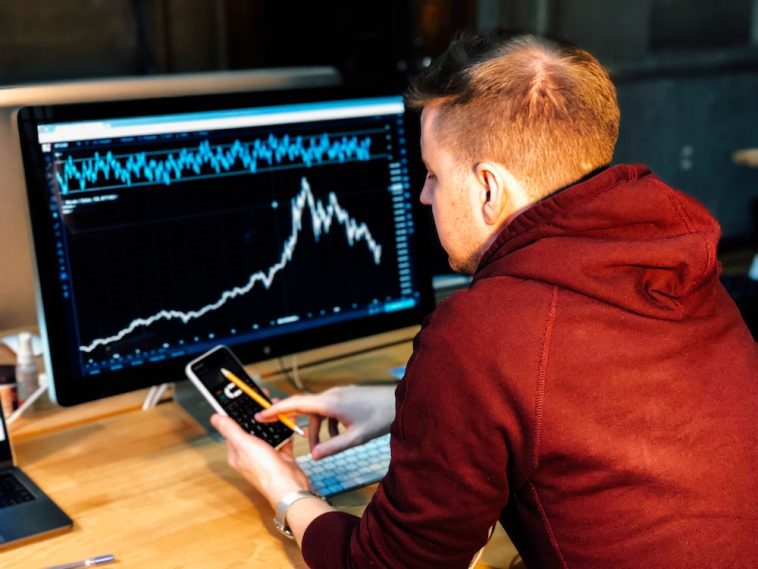Introduction
Let’s be honest — most people get into day trading thinking it’ll be a fast way to make money. Maybe you saw someone on social media flashing gains, maybe you read a success story, or maybe you’ve just had that itch to take control of your finances in a new way. I get it. That was me too.
But here’s the truth: no one really tells you how many mental shifts, tough lessons, and mindset rewiring you have to go through before you actually start making money as a day trader.
And that’s a big reason why most new traders quit within the first few months. Around 90% of day traders lose money in the first year — that’s not just a number, it’s reality. Source: Business Insider
This post isn’t here to sell you a dream. It’s here to walk you through the four phases that every real trader has to go through before they hit consistent profits.
Think of it like learning to play guitar. You don’t just pick one up and play a solo on day one. It takes time, reps, and a lot of frustrating “what am I even doing?” moments.
If you’re just starting out or even if you’ve been trading for a while and still feel stuck, this breakdown might help you figure out where you are — and what’s next.
Phase 1: The Excitement Stage (Also Known As The “This Is Easy!” Trap)
This is where almost everyone starts. You’re pumped. You’ve watched a bunch of YouTube videos, maybe opened a paper trading account, and you just made some fake profits. Or maybe you made a little real money early on.
Everything feels possible in this stage. The charts are starting to make sense (kind of), and the potential seems unlimited.
But here’s the catch — this is usually the most dangerous phase. Why? Because early wins often aren’t real skill — they’re luck. And luck always runs out.
You might over-leverage. You might ignore risk. You might start taking trades just because you’re bored or excited. And the worst part? You might not even know you’re making mistakes yet.
What most people don’t realize in this phase is that day trading is way more about discipline than excitement.
Phase 2: The Reality Check (AKA: The Pain Phase)
This is where things get rough. It’s the phase where losses start to pile up and confusion sets in. You start asking things like:
- “Why did this trade fail?”
- “I followed the same setup, so why did it go the other way?”
- “Do I even know what I’m doing?”
This is where most people quit. The adrenaline is gone, and now it feels like you’re just burning money.
But this phase is also where the learning really starts. If you can push through it, you’ll be better than 90% of other traders.
In this phase, you’ll likely:
- Start tracking your trades seriously
- Begin to understand the importance of risk management
- Realize that emotional control is a skill
- Learn that setups don’t work 100% of the time — and that’s normal
A great tip here? Start journaling every trade. Write down your entry, exit, why you took it, and how you felt. You’ll start noticing patterns — and not just on the charts.
Phase 3: The Refinement Phase (Where the Real Growth Happens)
By now, you’ve stopped chasing random setups and started narrowing your focus. Maybe you’re trading only one or two strategies.
Maybe you’ve figured out your ideal time of day to trade. Maybe you finally realized that not trading is also a trading decision.
This phase is all about consistency. You’re starting to hit more wins than losses. You’re starting to feel less reactive.
You trust your plan more. But you still mess up — and that’s fine. The difference is that now, you learn from it.
Things to focus on here:
- Mastering risk-to-reward ratios (e.g. risking $100 to make $300)
- Sticking to your trading rules, even when it’s boring
- Reviewing your stats weekly or monthly
- Being emotionally neutral — no more revenge trading
This is when things start to click. You’re not getting rich yet, but you’re not burning out either. And that’s huge.
Phase 4: The Profitability Phase (Sustainable, Repeatable, Boring Money)
Now you’re trading like a business. You have a process, and you stick to it. Your edge is proven. You don’t need to chase every move.
You’re patient, calm, and data-driven. This is where most real traders make money — not in explosive wins, but in small, consistent profits that add up over time.
This phase is still hard. There are losing streaks. There are months where nothing works. But you don’t panic anymore. You’ve seen this before. You adjust. You improve. You stay focused.
At this stage:
- You know exactly when not to trade
- You treat your account like capital, not gambling money
- You reinvest profits, or pull out with a plan
- You’re building consistency over hype
That’s where real freedom comes from — not making $5,000 in one day, but knowing you can pull $300–$500 daily or weekly over the long haul.
FAQs
1. How long does it take to become a profitable day trader?
It varies, but most people need 6–24 months of focused learning, practice, and refinement. If someone tells you they did it in a few weeks — they probably got lucky or they’re selling something.
2. Can you make a living from day trading?
Yes, but it’s not easy. You need enough capital, a tested strategy, discipline, and emotional control. Most full-time traders trade only a few hours a day, but they treat it like a full-time job behind the scenes.
3. How much money do I need to start day trading?
You can start with as little as $500 to $1,000 in some markets like crypto or forex, but for stocks (especially under PDT rules in the U.S.), you’ll need at least $25,000 in a margin account. That said, starting small while learning is smart.
4. What tools do I need to start?
A solid broker, a charting platform (like TradingView or Thinkorswim), and a trading journal. That’s really it. Don’t overcomplicate it with fancy indicators or $300/month subscriptions right away.
5. What’s the best strategy for beginners?
There’s no one-size-fits-all. Start simple: breakout trading, support/resistance, or moving average crossovers are all solid places to begin. But test everything before going live.
Final Thoughts
If you’re serious about trading, just know that it’s not a straight line. Every trader I know who’s making real money went through these four phases — some fast, some slow — but none of them skipped any.
There’s no shame in being in phase one or two. What matters is knowing where you are, and being honest with yourself about what you still need to learn.
So here’s my question to you:
Which phase are you in right now — and what’s the one thing you know you need to work on next?
Let me know in the comments or shoot me a message. I’ve been there. You’re not alone.





GIPHY App Key not set. Please check settings